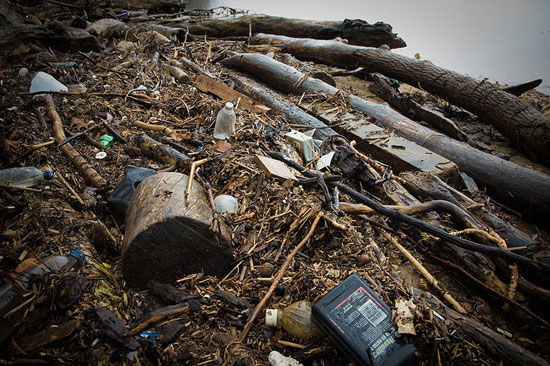Population growth, development named key players in Potomac River pollution
Potomac Conservancy calls for the reduction of runoff in river report card.
Plumes of sediment, floating trash and pathogens that make once-swimmable water unsafe: pollution of all kinds continues to plague the Potomac River, as populations grow, pavement expands and stormwater runoff pushes various hazards into the 405-mile long waterway.
But for the Potomac Conservancy, a boost in incentives, assistance and enforcement just might save the nation’s river.

Image courtesy kryn13/Flickr
According to the advocacy group’s sixth annual State of the Nation’s River report, “too many stretches of the Potomac River are still too polluted to allow you to safely swim, boat or fish, or to support healthy populations of fish and other aquatic life.”
The cause? A “pending storm” of population pressure and development, said Potomac Conservancy President Hedrick Belin.
For Belin, more people means more development. More development means more pavement. And more pavement means more stormwater runoff.
The fastest growing source of pollution into the Chesapeake Bay, stormwater runoff is rainfall that picks up pollutants—in the Potomac River’s case, nutrients, sediment, pathogens and chemicals—as it flows across roads, parking lots, lawns and golf courses. It carries these pollutants into storm drains and rivers and streams, posing a threat to marine life and human health.
But cities and towns throughout the Potomac River basin are curbing stormwater runoff by minimizing their disturbances to the land. And it is this local, land-based action—the installation of rain barrels and green roofs, the protection of forests and natural spaces, the passing of pollution permits in urban centers—that the Conservancy thinks will push the river in the right direction.
In the report, the Conservancy calls on state and local decision-makers to strengthen pollution regulations, increase clean water funding and improve pollution-reduction incentives and technical assistance.
“The Potomac Conservancy is advocating for river-friendly land-use policies and decisions, especially at the local level,” Belin said. “Because defending the river requires protecting the land that surrounds it.”
Learn more about Troubled Waters: State of the Nation’s River 2012.

Comments
I hope the Conservancy is also calling on state and local officials to end policies that accelerate population growth. They pursue growth. They measure success by how much they grow. Economic development incentives and other growth subsidies artificially increase the rate of population growth to the region. Population growth has been named as the cause. Why not come up with a solution that addresses the cause rather than the symptoms? Call for population stabilization.
Dave Gardner
Director of the documentary
GrowthBusters: Hooked on Growth
Thank you!
Your comment has been received. Before it can be published, the comment will be reviewed by our team to ensure it adheres with our rules of engagement.
Back to recent stories